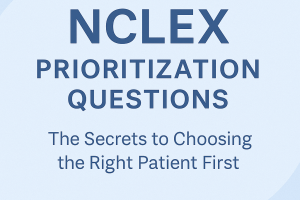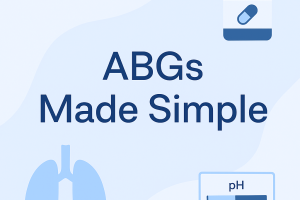MENTAL HEALTH: THERAPEUTIC COMMUNICATION TECHNIQUES

Therapeutic communication in mental health involves intentional interactions that promote emotional healing, understanding, and a sense of security in patients. Unlike everyday conversation, therapeutic communication requires deliberate strategies tailored to individual patients, taking into account factors such as their mental health status, emotional state, and cultural background. By applying these techniques, nurses create a safe and supportive environment that encourages patients to share openly and honestly, facilitating better assessment, diagnosis, and treatment.
Key Therapeutic Communication Techniques
1. Active Listening
Active listening is foundational in therapeutic communication. It goes beyond hearing words; it involves truly understanding the patient’s message, both verbally and nonverbally. Through gestures such as nodding, maintaining eye contact, and showing empathy, nurses demonstrate that they are fully present. Active listening helps patients feel validated and encourages them to share more deeply.
2. Open-Ended Questions
Open-ended questions invite patients to elaborate on their feelings and experiences, rather than limiting them to a yes or no response. This technique allows for a more complete expression of thoughts and feelings. For instance, instead of asking, “Are you feeling anxious?” a nurse might ask, “Can you describe what’s on your mind right now?” This approach encourages exploration and provides the nurse with greater insights into the patient’s state of mind.
3. Reflection
Reflection involves echoing a patient’s words or emotions to validate and clarify their feelings. If a patient expresses frustration, the nurse might respond with, “It sounds like you’re feeling frustrated because of…” This technique confirms understanding and encourages patients to explore their feelings further.
4. Silence
While silence might feel uncomfortable, it is a powerful communication tool in mental health. Allowing moments of silence gives patients space to process their emotions and thoughts. This technique can be especially helpful during intense or emotional discussions, as it shows respect for the patient’s pace and encourages deeper self-reflection.
5. Clarification
Clarification helps ensure that both the nurse and patient accurately understand each other. When patients describe complex emotions, nurses can respond with statements like, “Could you explain what you mean by feeling ‘trapped’?” Clarification minimizes miscommunication, supports accurate assessment, and encourages patients to express themselves more precisely.
6. Empathy
Empathy involves putting oneself in the patient’s shoes and genuinely understanding their experience. By using empathetic statements such as, “I can imagine this situation feels overwhelming,” nurses convey respect and compassion. Empathy helps establish trust and encourages patients to open up, knowing their feelings are acknowledged and valued.
7. Summarizing
Summarizing involves briefly restating what the patient has shared to ensure understanding. For instance, a nurse might say, “So, if I understand correctly, you’re feeling anxious because of the upcoming change in your treatment plan.” Summarizing helps clarify key points and confirms understanding, offering patients a chance to correct or elaborate on what they’ve expressed.
Practical Tips for Effective Therapeutic Communication
• Cultivate Self-Awareness: Nurses should be mindful of their own biases, emotions, and nonverbal cues. Self-awareness helps in delivering non-judgmental, empathetic communication.
• Be Present and Patient: Giving undivided attention, without rushing or interrupting, fosters trust and encourages patients to open up.
• Adjust to the Patient’s Pace: Every patient processes and expresses feelings differently. Adjusting to their pace, particularly for those experiencing anxiety or depression, demonstrates respect and empathy.
• Practice Consistency: Building rapport often takes time. Consistent, supportive communication fosters trust, which is essential for patients who may initially feel apprehensive.
Sample Questions for NCLEX Preparation
Question 1
A nurse is using therapeutic communication with a patient who appears withdrawn. Which technique is most appropriate to encourage communication?
A. Asking, “Are you feeling better today?”
B. Offering advice on how to manage their emotions
C. Allowing silence for the patient to gather their thoughts
D. Suggesting they talk about something more positive
Answer
C. Allowing silence for the patient to gather their thoughts is a therapeutic technique that encourages patients to process their feelings and communicate at their own pace.
Question 2
During a session, a patient expresses feelings of being overwhelmed by their condition. What would be the best therapeutic response from the nurse?
A. “You should focus on the positive aspects of your life.”
B. “Many people feel the same way; it’s normal.”
C. “I can see that this feels overwhelming for you.”
D. “I think you’re overreacting; things will improve.”
Answer
C. “I can see that this feels overwhelming for you” is an empathetic response that validates the patient’s feelings and builds rapport, showing genuine understanding.
Question 3
A patient tells the nurse, “I feel like no one understands what I’m going through.” Which response demonstrates the technique of reflection?
A. “Why do you feel that way?”
B. “Can you tell me more about what you’re experiencing?”
C. “It sounds like you feel misunderstood.”
D. “You should talk to others about your feelings.”
Answer
C. “It sounds like you feel misunderstood” reflects the patient’s statement, encouraging them to explore their emotions further.
Conclusion
Therapeutic communication is vital for building trust and understanding with patients in mental health settings. Through techniques like active listening, reflection, and empathy, nurses create a supportive environment where patients feel heard and valued. By mastering these skills, healthcare providers can significantly improve patient outcomes and contribute to a more compassionate, patient-centered approach in mental health care






